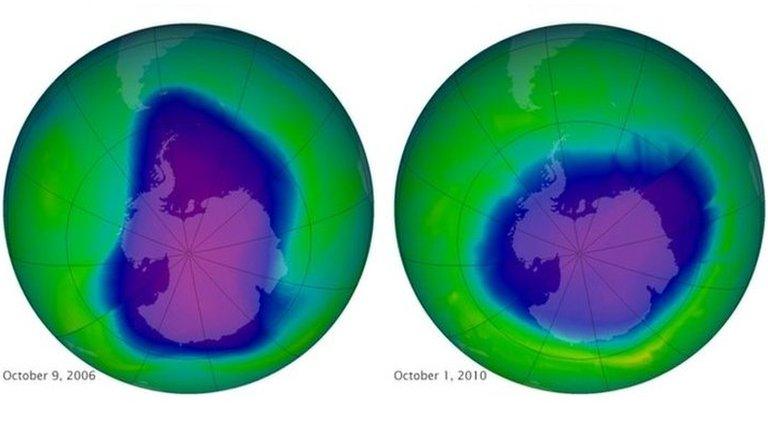Incredible facts about the Halley VI research station
- Published
We've been finding out more about the big move...
A huge crack in the ice near an important scientific research station is forcing it to move to a new location.
The Halley VI is a British Antarctic Survey research station which is based at the Brunt Ice Shelf, in Antarctica.
It's home to a team of scientists, engineers and a colony of penguins!
However, two large cracks have appeared in the ice, which could potentially cut off the research centre if it breaks away from the main island.
So in 2015, the scientists at the station decided to move it 23 kilometres further inland to stop this from happening.
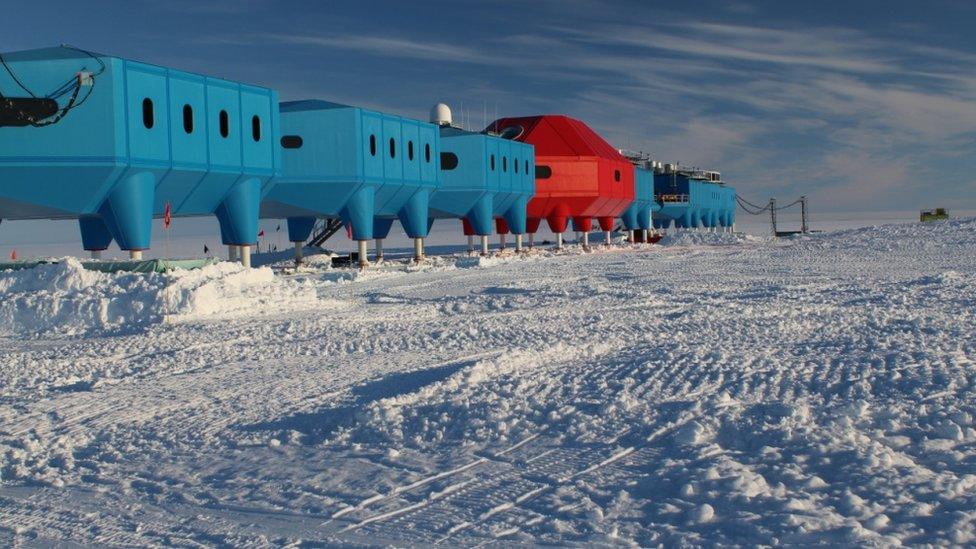
The Halley VI base can raise or lower its legs - and has skis on the bottom
The research station is made up of eight large pods (like giant train carriages) which sit on skis. These pods can be separated and moved using special heavy vehicles.
The last pod is currently being moved to the new location, and the BAS think it will be completed before March.
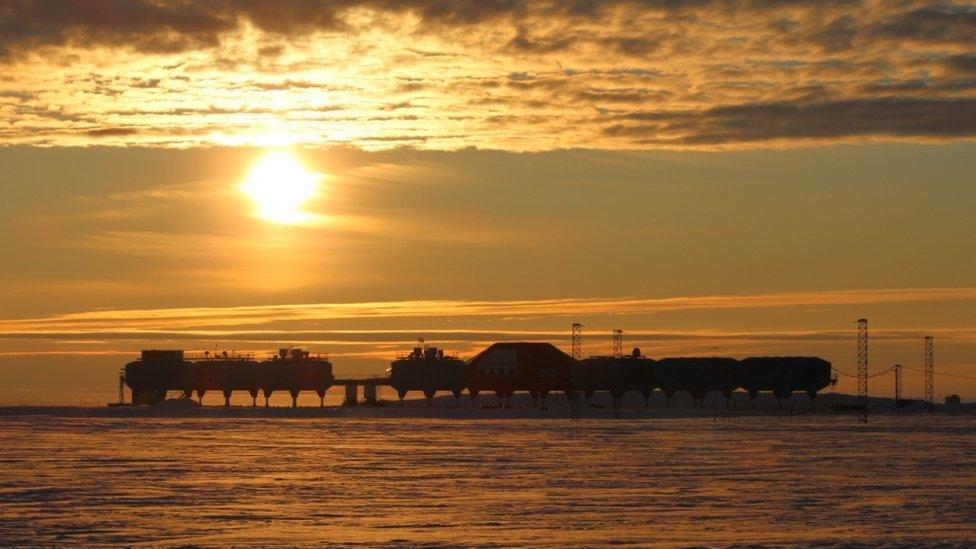
The base is in the process of being moved to a new location farther away from the ocean
Fun facts about the Halley VI
The base was named after Edmund Halley, who was a famous scientist and astronomer.
Since 1956 there have been six Halley research stations on the Brunt Ice Shelf.
The researchers who live there investigate all sorts of things from climate change, to marine animals, to the weather.
Their long-term research led to the discovery of a hole in the Ozone layer in 1985!
The base has even been used to help the European Space Agency, by testing out what it's like to live and work in a place that is very isolated.
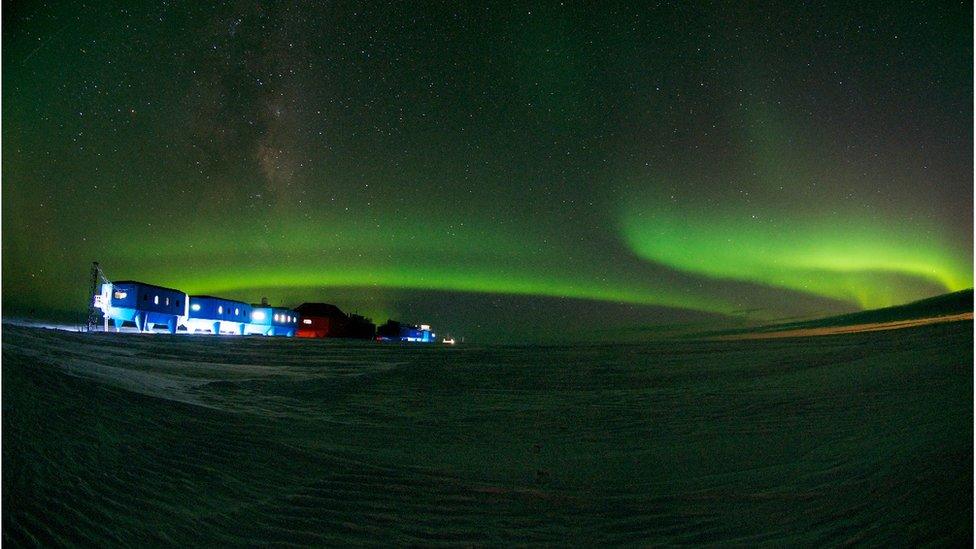
You can see the Aurora australis very clearly from the Halley research station.
During the winter temperatures can range from -20°C to -55°C in the Antarctic, and there is no sunlight at all for 105 days of the year - so it's a bit like living in a space station!
Around 70 people can live in the the Halley VI during the summer (from December to March) - but during the winter only 16 research staff or 'winterers' as they are nick-named, stay on at the station.
These special winterers help to keep the station and the scientific experiments running, and includes a chef, a doctor, mechanics, an electrician, and several engineers.
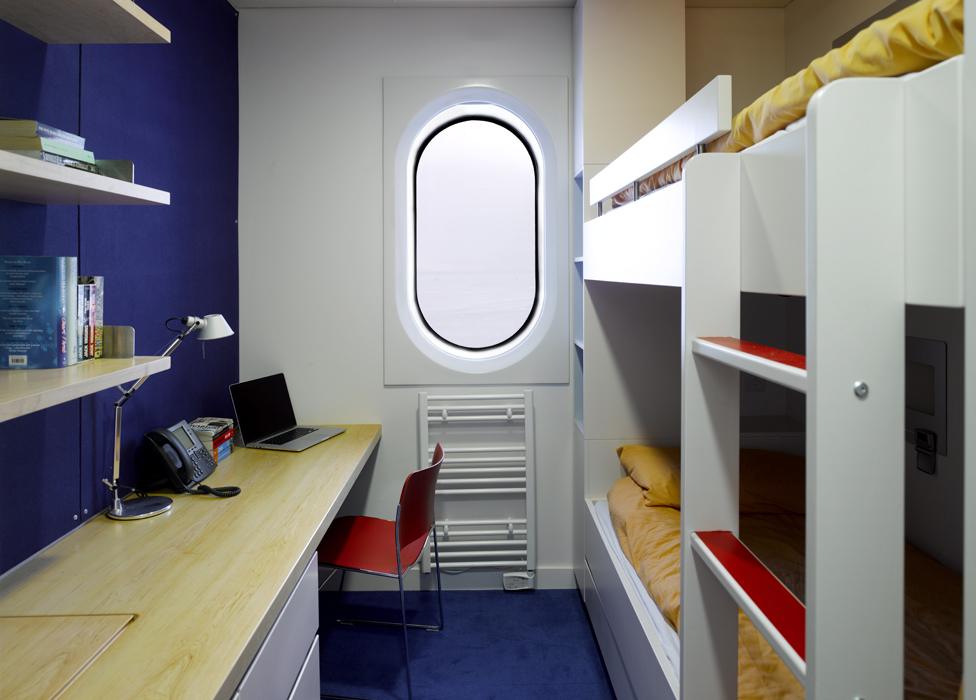
Each bedroom at the Halley station has a window to the outside
Halley VI was built in 2013 and has eight different colourful pods which are split into sleeping areas, research laboratories and even a gym!
- Published28 October 2016
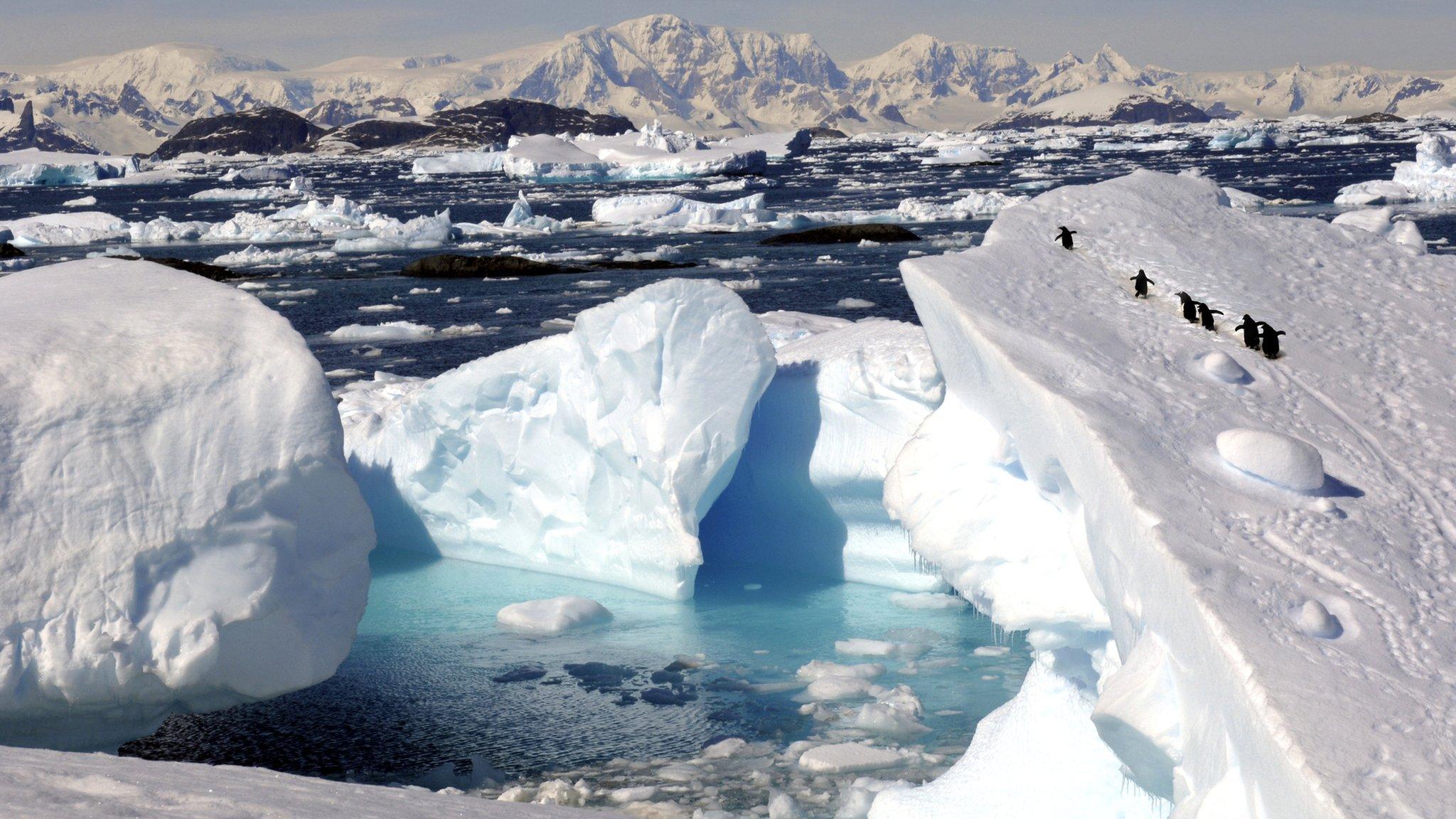
- Published7 February 2013
- Published11 September 2014
